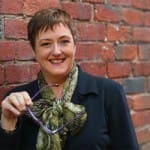lnvest in Capacity Instead of ‘Throwing Darts’
3 December 2014 at 10:38 am
Funders and beneficiaries should cease “throwing darts” at one another and focus on investing in the capacity of Not for Profits to measure social outcomes, a Sydney impact measurement conference has been told.
The panel discussion at the Think Outcomes event featured Michael Traill AM, the former CEO of Social Ventures Australia, Sam Sayers, Director of the ten20 Foundation, Tony Abrahams, CEO of closed captioning service Ai-Media, and Lisa Wade, Head of Community Assets at Bendigo and Adelaide Bank.
“We do have a community where I think many think sometimes this debate gets stuck in silos,” facilitator Traill said.
“Not for Profits are throwing darts at funders because the funders are miserable and they don’t get the pain of the Not for Profits, the funders sometimes in their own dysfunctional way are not actually listening to where the funding requirements for growth and capacity are.”
Sam Sayers, whose organisation works in the Collective Impact field, said funders remained tentative when it came to capacity building.
“Australians are comfortable to fund programs but are far less comfortable funding the capacity that supports Collective Impact, and the critical funding of the capacity required for evaluation, which is lengthy and expensive,” she said.
“I think we have the potential to attract new sources of funding to the sector but we need to get those models up and funded in the first place.”
Discussion veered to whether or not funders, for example, corporate foundations, were “obsessed with branding or pet projects.”
It was noted that funders were risk-averse, wanting robust measurements to know the returns were there, and to have the certainty that regular investors have.
A high level of marketability and measurement was spotlighted as necessary to prove the investability of the sector to funders. However, some members of the panel lamented the fact that getting foundations and funders to invest was so difficult given they would just give money away mos tof the time.
“There’s a real need to build capacity both within an organisation and at community level. All the conversations we’re having with corporates – they’re more focused on evaluation. I think, intrinsically, they understand and highly value rigorous evaluation, so that seems to be the point at which they are most willing to engage. It’s challenging because investors are looking for proof of efficacy. There’s a need to build capacity so Not for Profits can speak that language and understand how to do that work,” Sayers said.
“We all need to take responsibility for the efficacy of our programs and coming from a position of good intent is not enough. I would love to see a culture of longitudinal evaluation start to take hold in Australia but equally as funders we’ve got a responsibility to support investment in evaluation.”
Tony Abrahams said there remained tension between the need for simplicity and the need for detailed rigour around each of the different metrics.
“Profit is easy because you can just look at the balance sheet…everything can be boiled down to a single number. The challenge we’ve got is that we’ve got all these great heads used to looking at things in this very rigorous and very effective way, and trying to add in another dimension,” he said.
“There is a benefit to simplifying things. UK Government is asking what impact can be achieved with a fixed sum…It will be interesting if the Australian Government will look at some of that work that’s been done to provide some opportunities for innovation in the space, I don’t think there’s enough.”
Participating in the discussion from the audience, Family Life CEO Jo Cavanagh asserted that educational institutions could also play a role in address the lack of capacity for measurement.
“A lot of our human services workforce is not trained in the skills they need to translate research and evidence into practice, and being rigorous about how they then apply that in practice, and assess the impact that’s having on the beneficiary. And it’s a tough gig for our workforce,” she said.
“I think this workforce capacity building, and universities and training institutes need to be at the table – are they training them in the right things for today’s world, and do we have a workforce that’s curious about the impact of the work that they’re doing and how they can track and measure that? That’s our baseline as an organisation..it’s the big bit that we’re missing.”
Think Outcomes, hosted by the Centre for Social Impact in partnership with the Social Impact Measurement Network of Australia (SIMNA) and the Australian Research Alliance for Children and Youth (ARACY), is focused on the measurement, analysis, evaluation and communication of social outcomes.







